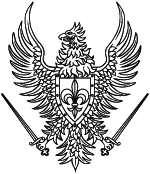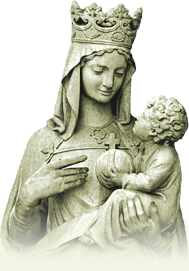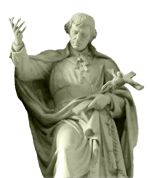History
The pillage of the spanish treasure
Victor Peregrino
By the end of the Spanish Civil War, NKVD (soviet intelligence) general and diplomat Alexander Orlov abandoned to the Western side. Later on he published a book called The Secret History of Stalin’s Crimes, in which he describes what is most likely to be the greatest larceny in History.
General Orlov had arrived in Spain in September of 1936, right after the beginning of the civil war, nominally as a consultant to the republican government, but in truth as a soviet spy.
Less than a month later, he got a secret message commanding that he provided the transferring of the Spanish gold reserves to the Soviet Union, by common consent with Prime Minister Largo Caballero. The message was signed by Ivan Vasilyevich, alias of Stalin himself. The republican government, afraid of having the national reserves falling into the hands of General Franco’s nationalist rebels, who besieged Madrid, decided to protect the Spanish Treasure by delivering it to the “safeguard“ of Josef Stalin, the Russian Dictator, that had been claimed as “the genial guide of the crowds” by the bolshevist left.
The transference of the gold and silver from the coffers of the Bank of Spain was ordered by means of a secret decree, signed on September 13th 1936 by President Manuel Azaña and by the Minister of Finance, Juan Negrín.
Stalin did not play dumb, and immediately commanded the communist secret service to provide the transferring, looking forward to the opportunity of growing the muscovite treasure up in 725 tons of Spanish gold.
Orlov unleashed the operation with the support of the republican government. The gold was being kept in Cartagena – a Mediterranean seaport - inside Navy underground ammunition magazines, packed into over 10.000 boxes, each one containing 65kg of pure gold. For this reason, it was necessary the collaboration of another Spanish Authority: the Minister of the Navy and the Air Force, Indalécio Prieto.
One decided that the cargo would be dispatched in Russian freighters, which would be escorted by Spanish warships to the soviet seaport of Odessa, in the Black Sea. But time was short, because in case information leaked, the convoy would be easily intercepted by Germany or Italy, Franco’s allies.
Orlov requested all Russian ships that arrived at Cartagena bringing warlike material for the republicans, as well as the equipage of a brigade of soviet tanks that had arrived two weeks before, commanded by Colonel S. Krivoshein. He provided twenty military trucks, driven by Russian tank drivers disguised as Spanish soldiers, who performed, during the night, the shifting of the boxes from the warehouse to the seaport, in a two-hour journey. Sixty Spanish sailors had performed the loading of the trucks.
The operation took three nights, from sunset to sunrise, accomplished in the dark due to the blackout imposed by the German bombers. In spite of those which hit a Spanish ship moored nearby the Russian freighters, the gold loading was a complete success, and four soviet vessels set off to Odessa, carrying in their decks all the treasure that had been gathered by the Spanish nation for centuries.
Few moments before the departure, a director of the Spanish Treasure demanded from Orlov a receipt for the 7800 boxes of gold that he declared to have shipped, but the Russian agent, following Stalin’s cunning orders, told him he was not authorized to do so, advising him to send one representative of the Spanish Treasure to go along with the cargo, aboard of each one of the four ships. And so did they.
When the gold arrived at Odessa, it was unloaded by a host of NKVD agents, disguised as stevedores, and dispatched immediately by train to Moscow. Both the seaport and the railroad were isolated by special troops.
As soon as Stalin saw the treasure locked into Russian coffers, he threw a great party to the leaders of the communist party and to the NKVD board of directors, to commemorate the success of the maneuver. The dictator was so rejoicing with the achievement that he surely recalled the times when he had robbed banks to gather funds for the communist cause. NKVD chief Nikolay Yejov heard him say: “They will not see this gold anymore, as they do not see their own ears”.
***
And how big were these ears! Is it possible that experienced politicians – all communist and socialist militants – could really believe that the revolutionary par excellence, who confiscated the Russian people’s goods, who ferociously shot his own companions, would respect the “bourgeois” rule in respect of alien property? Amazing as it may sound, it looks like they did believe it.
The fact is that the gold, which was worth 600 million dollars by that time (today it would be worth more than five billion dollars), has never returned. The Spanish representatives that had gone along with the cargo to Russia were kept prisoners until the end of the civil war. Years later, Pravda, the official press agency of the Communist Party, admitted that, indeed, something around 500 tons of gold had been received in 1936, but as a payment for Russian supplies that had been sent to the republican government, supplies to which Spain would still owe Russia over US$50.000.000,00.
Para citar este texto:
"The pillage of the spanish treasure"
MONTFORT Associação Cultural
http://www.montfort.org.br/eng/veritas/historia/pilhagem/
Online, 22/02/2025 às 21:27:44h








